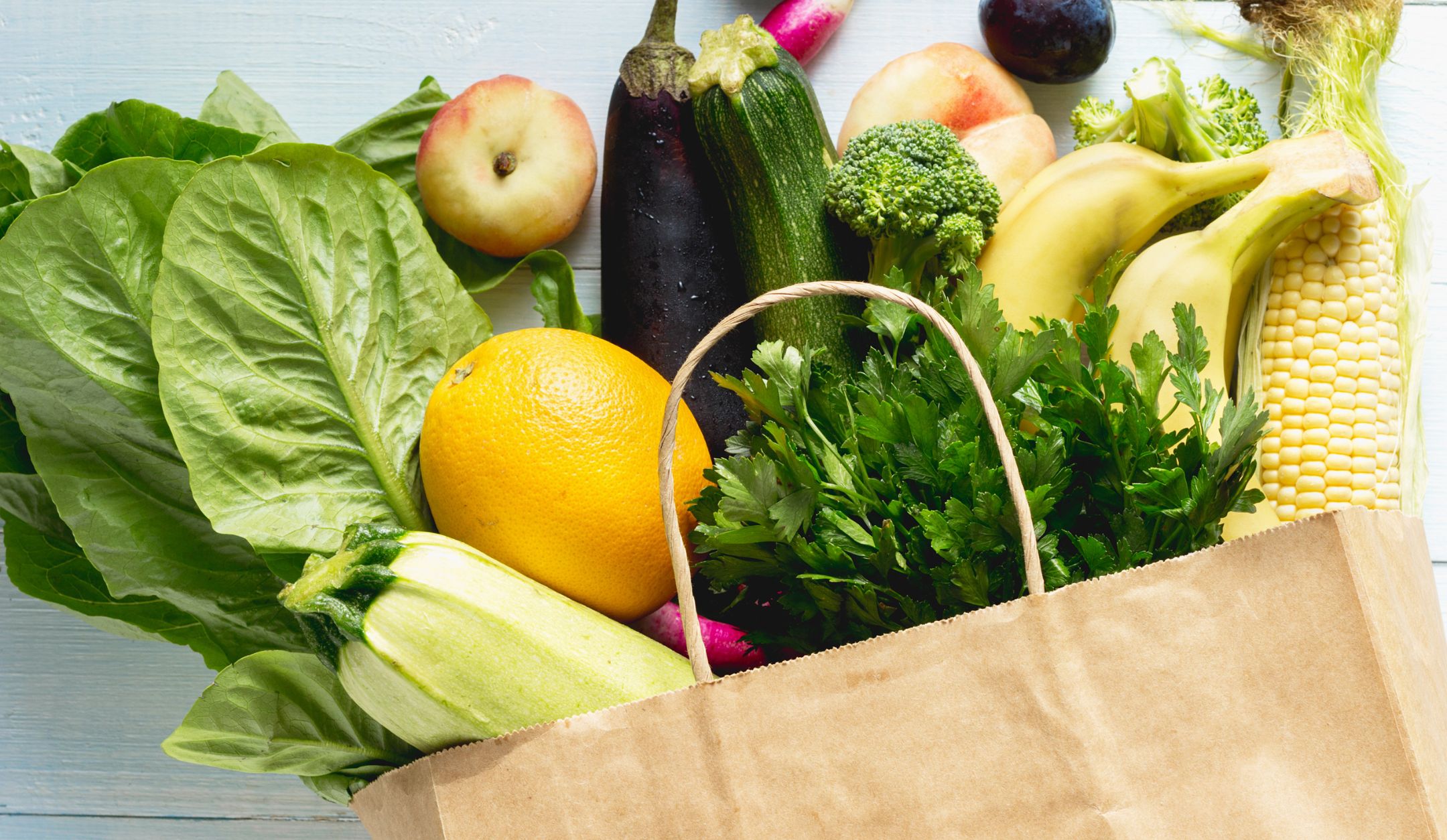How to Marke Good Grocery Store Choices
You’re not alone if you are confused about choosing healthy foods at the market. Here are a few tips to help you make the best choices.
- Always read the ingredient list.
- Look for foods with fewer ingredients.
Packaged foods tend to have long, dense, small-font paragraphs of ingredients.
Most packaged foods contain unpronounceable chemicals, food coloring, and lots of added sugar, salt, and fat—far more than is optimal for human health. Some chicken broths contain as much as 800 mg of sodium (salt) in a one-cup serving and sugar as well.
It is unlikely that if you made your own broth, you would use that much salt or add any sugar. Additives are known by food companies to be both cheap and palate-enticing, but they provide little more than empty calories at best and health hazards at worst.
A bag of snap peas has one ingredient: snap peas. So does a head of cauliflower. A steak or a pack of chicken breasts also each have one ingredient.
What’s implied in buying simplified foods is that you will add other ingredients like salt, pepper, spices, or oil—and you will know what they are. When you let packaged food companies prepare or cook for you, they usually add cheap and unhealthy ingredients you don’t want or need.
There is a reason that packaged foods sell well. In addition to convenience, they are tasty. We are programmed to love foods with salt, fat, and sugar—and food manufacturers, with sophisticated research and development departments, create them to be addictive to some degree.
As mammals 100,000 years ago, man often faced feast or famine conditions. We have evolved to gorge ourselves on calorie-rich sugars and fats when they are available as an instinct to sustain life when scarcity arrives. But modern life provides most of us with far too much food. The cheapest and most enticing are often highly tempting calorie-rich packaged foods.
For maximum health, we have to break the habit of filling up on these appealing foods. If you prefer not to make your own pasta sauce, buy sauce made only from tomatoes, olive oil, oregano, garlic, and assorted herbs, rather than those with added chemicals and tons of added sugar. If you are used to high amounts of sugar in your pasta sauce, it may take a while to get used to eating a tangier, more natural sauce with little more sugar than what is naturally found in tomatoes.
Location is Key
Steering clear of packaged foods means shopping in the outer aisles of the supermarket. The mac & cheese, frozen dinners, cake mixes, cereal, and hamburger helpers all live in the middle aisles. Dairy, eggs, produce, and meat usually line the periphery of markets along the sides and across the back. That’s where to shop for healthier fare.
Ingredient Order Matters
Note that ingredients are listed on packages in descending order by weight, so the first ingredient is the most plentiful. And this is why reading labels pays off. If you’re buying breakfast cereal and the first or second ingredient is sugar, a bowl of that cereal will have more in common with a candy bar than with a healthy and nutritious first meal of the day. For that reason, in general, it’s best to avoid packaged foods that announce sugar as one of the first three ingredients.
Try this experiment if you are dealing with a demanding child desperate for sweet cereal. For kids old enough to read, unleash them into the cereal aisle and tell them they can have any cereal they want as long as it has four grams or more of fiber per serving.
The Benefits of Fiber
While most cereals have a high grain content and will have relatively high sugar or carbohydrate counts (carbohydrates digest into sugar), four grams or more of fiber will indicate the presence of whole grains. Fiber comes mainly from the hulls left on grain that has not been processed or refined. Fiber is usually indigestible, but our gastrointestinal tracts try anyway.
Fiber slows down digestion, slowing the rate at which sugar gets into the bloodstream. Instead of hitting your bloodstream at 100 miles per hour and spiking your levels too quickly for your body to handle, a high-fiber meal regulates the sugar onslaught more effectively and healthfully, making the food less likely to trigger Type 2 diabetes over time.
Seek Whole Foods
Look for whole foods in the ingredients. If you eat gluten, buy whole wheat bread rather than “wheat” bread made with refined white flour. The term “multi-grain” can be misleading. It just means there is more than one grain in the mix, but if the grains are processed and refined, then you can be eating white flour and white rice with none of the fiber or vitamins found in unprocessed whole grains.
Stay Away From Stealth Sugars
Don’t forget to be aware of added sugar. You never want this number to exceed 5-8 grams per serving. As defined by the FDA, sugars added during food making include sugars from syrups and concentrated fruit or vegetable juice. In addition to setting us up for the onset of Type 2 diabetes, a diet high in sugar is likely to set off an inflammatory response that can exacerbate auto-immune disorders, joint pain, and other maladies.
Find the Good Fats
Fats have earned a bad reputation, but guess what? They are essential for your brain, organs, and heart to function well. What you want less of are saturated and trans fats. Trans fats are so harmful that the FDA banned their use in 2018. But watch out even for high amounts of healthy fats because prepared foods high in fat are often high in sugar too. Think of packaged cookies and cakes.
Beware of Tricky Terms:
- “Light” or “lite” products. Anything “light” has been processed to cut down on calories or fat, which means even the nutrients in them can be watered down. And sometimes, the process the food undergoes to make it “light” brings its own health threats.
- Multigrain: Do not mistake this for “whole grain.” They are not the same thing.
- Natural: This only indicates that at some point, the food producer worked with a natural source, such as an apple or rice, to produce what may well be a highly processed and refined food that is, in fact, not related to nature by the time it gets you.
- Low-fat: This designation usually means that the fat in the original product – milk, yogurt, ice cream, cream cheese, crackers, cookies – has been reduced. In some cases, the fat has been replaced with added sugar or other materials or chemicals to compensate for the loss in flavor that fat removal created. In some cases, eating such products can feel unsatisfying, leading consumers to eat more, which can lead to weight gain or feeling more hungry.
- Enriched: This means that real nutrients naturally found in food have most likely been removed, and, to compensate for that loss, manufacturers have added vitamins and minerals. This ploy is typical in most white bread and other refined flour products. A loaf of white bread would provide a few nutrients without additives.
In summary, stick to simple, whole foods, and ignore the fake stuff. We know a bag of Cheetos can taste great, but with its 20+ ingredients, you’re better off shaving the kernels off an ear of fresh corn, throwing them in a skillet and sauteing with olive oil, salt, cheese (if you eat dairy), fresh garlic, oregano and some cayenne for a delicious savory snack full of flavor, natural sweetness, heat, and tang, with only 2.9 grams of sugar, low fat, moderate fiber, vitamins C, B, E and K, and the carotenoids lutein and zeaxanthin, which research shows are great for eye health.
Processed foods are always tempting (and taste great going down), but most foods found in nature will be better for you than most manufactured products.
The Takeaway:
- Choose foods that list whole foods at the front of the ingredient list.
- The fewer the ingredients, the better.
- If you can’t pronounce their names, put it back on the shelf!
Lauren Embree
Lauren is a retired professional tennis player, two-time college national champion, and former university assistant tennis coach. She brings over a decade of experience, a love of fitness, and a passion for helping others become their best selves. Lauren is AFPA and NASM certified and designs personal nutrition meal plans and workout programs for all individuals.



















